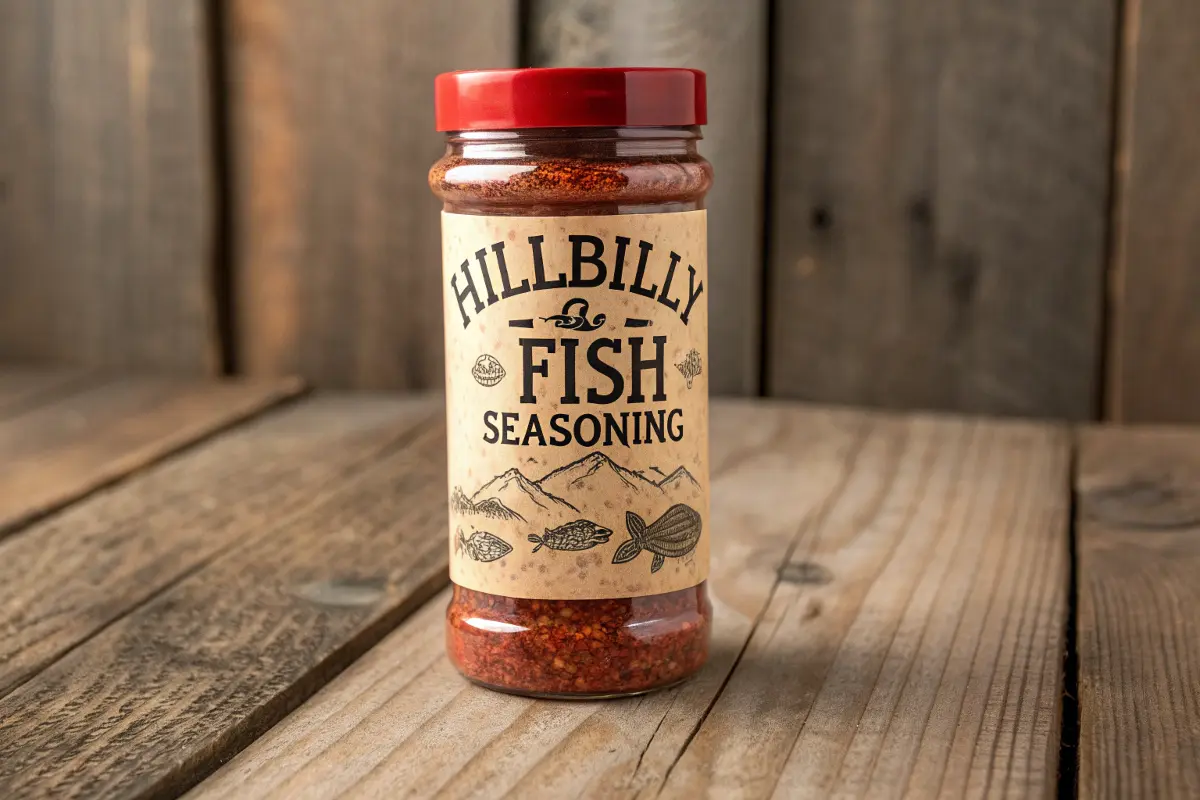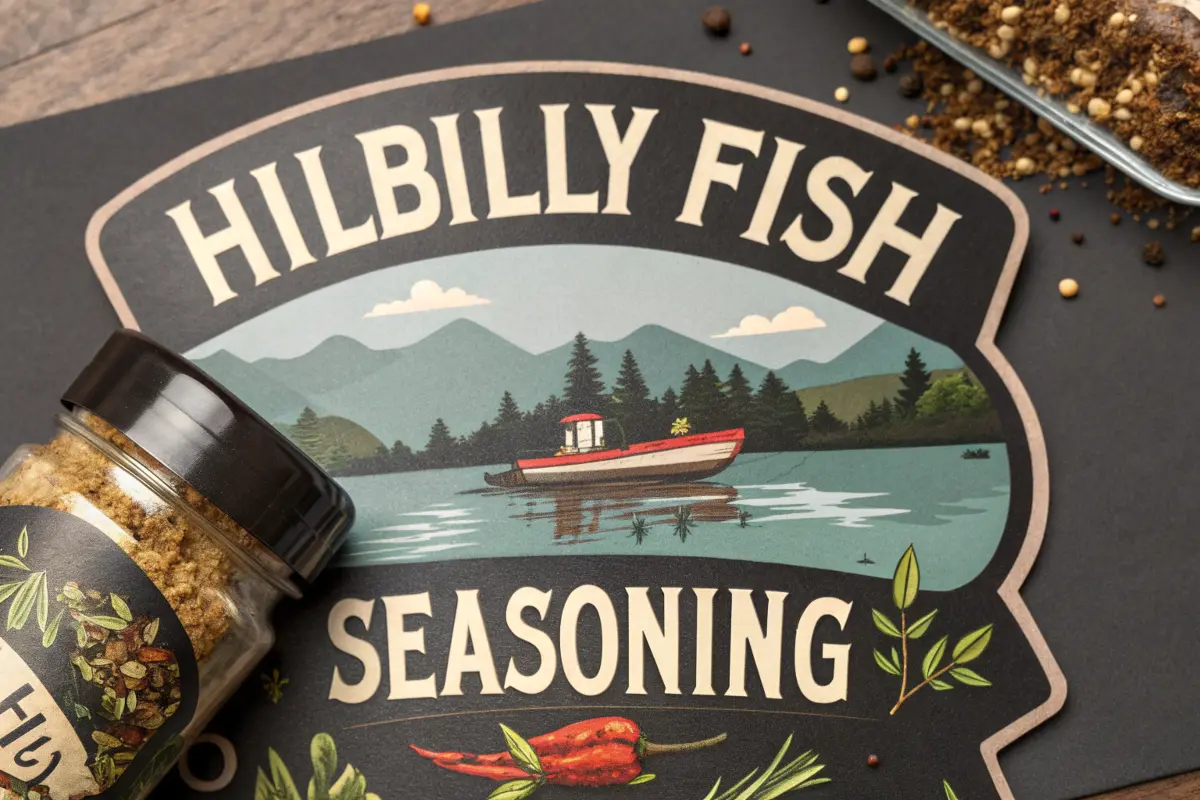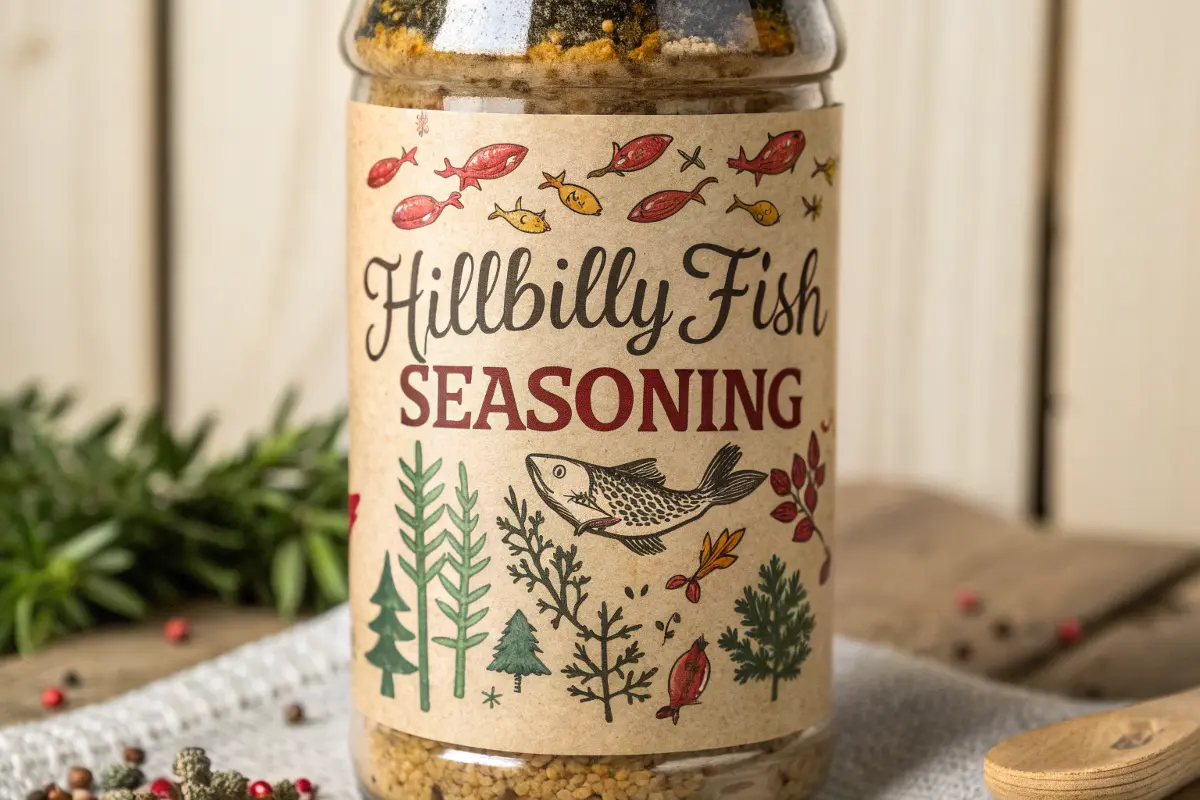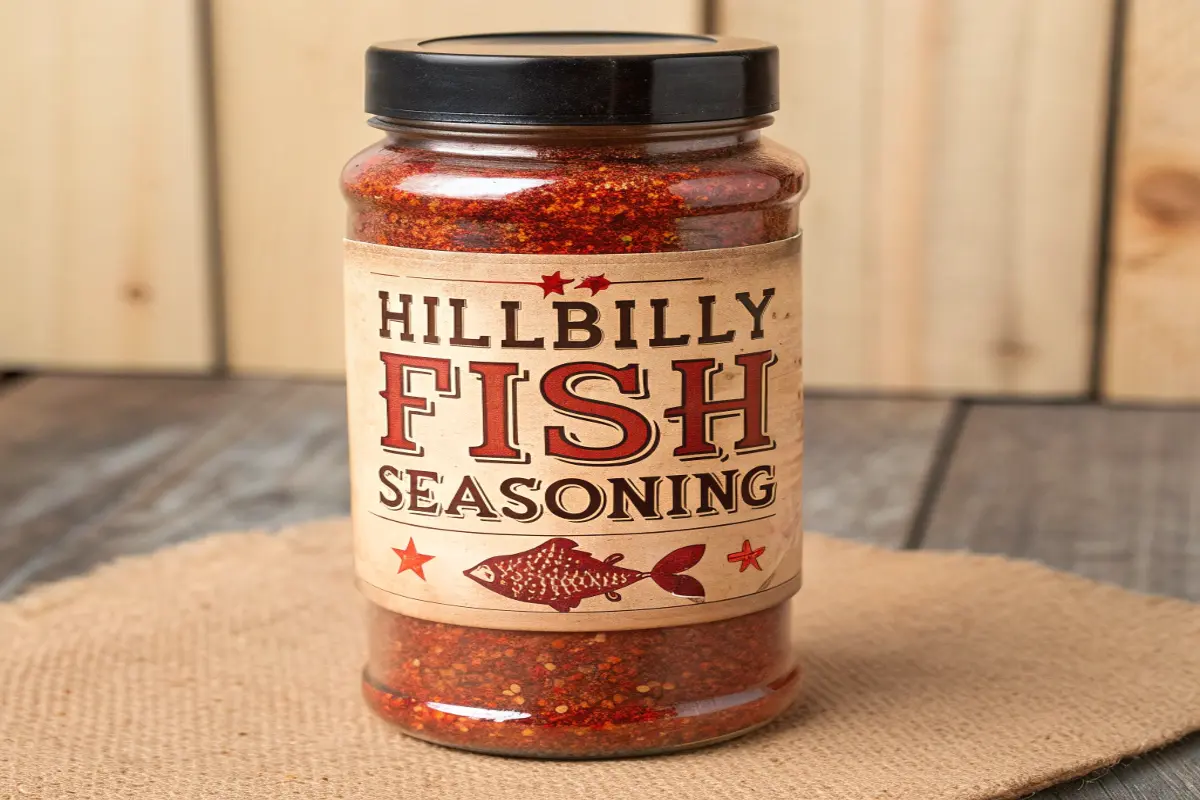Hillbilly-style cooking is all about bold flavors, simplicity, and making the most of everyday ingredients. This guide will walk you through creating the perfect hillbilly fish seasoning, exploring its creative uses, and mastering advanced techniques to elevate your seafood dishes. Whether you’re preparing a hearty fish fry or a light grilled fillet, this article will provide all the insights you need.
Hillbilly Fish Seasoning Recipe
Why Hillbilly Fish Seasoning?
Unlike store-bought blends, homemade hillbilly fish seasoning combines rustic charm with personalized flavors. It offers flexibility, allowing you to control the spice level, salt content, and sweetness, making it a versatile addition to any kitchen.
The History of Hillbilly Fish Seasoning
Hillbilly fish seasoning has deep roots in Southern and Appalachian cuisine, where resourceful cooks used simple, locally available ingredients to create flavorful meals. Early settlers and rural communities relied on a mix of dried herbs, salt, and spices to enhance their freshwater fish, which were often caught from nearby rivers and lakes. The seasoning evolved over generations, incorporating bold flavors like smoked paprika, cayenne, and garlic to complement the rich, flaky texture of fish. Each family had its own unique blend, adjusting the ratios of herbs and spices based on taste preferences and ingredient availability. This rustic approach to seasoning is still cherished today, maintaining a strong connection to its heritage.
Over time, hillbilly fish seasoning became a staple at community fish fries, outdoor cookouts, and country kitchens. The seasoning’s versatility made it popular beyond the South, as travelers and food lovers discovered its robust flavors. Modern versions retain the traditional elements while incorporating new ingredients like citrus zest, brown sugar, or even crushed crackers for added texture. While store-bought seasonings offer convenience, nothing beats the homemade charm of a personalized hillbilly blend. This seasoning is more than just a mix of spices; it’s a symbol of resourcefulness, family traditions, and the timeless joy of gathering over a delicious meal.
Ingredients for Hillbilly Fish Seasoning
Here’s a list of essential ingredients you’ll need:
- 1/4 cup paprika – Adds a smoky, sweet base flavor.
- 1 tablespoon garlic powder – Enhances the savory profile.
- 1 tablespoon onion powder – Provides mild sweetness and depth.
- 1 tablespoon salt – Balances and amplifies other flavors.
- 2 teaspoons black pepper – Offers a subtle spicy kick.
- 2 teaspoons cayenne pepper – Ideal for heat lovers.
- 1 teaspoon dried thyme – Infuses a touch of herbaceousness.
- 1 teaspoon dried oregano – Complements the earthy undertones.
- 1 teaspoon smoked chili powder – Introduces a rich, smoky note.
- 1 teaspoon sugar – Balances the spices with a hint of sweetness.
Step-by-Step Instructions
- Mix the Base Ingredients:
Combine paprika, garlic powder, onion powder, salt, and black pepper in a medium-sized bowl. Stir thoroughly to ensure an even mix. - Add Herbs and Heat:
Gently crush thyme and oregano before adding them to the blend. Incorporate cayenne pepper and smoked chili powder for added depth. - Sweeten the Blend:
Stir in sugar to balance out the spice and enhance the natural flavors of the fish. - Store Properly:
Whisk the ingredients to remove lumps and transfer the mix to an airtight container. Store in a cool, dark place for up to three months.
Choosing the Best Fish for Hillbilly Seasoning
The right choice of fish can significantly enhance the impact of hillbilly fish seasoning. Traditionally, freshwater fish like catfish, bluegill, and crappie have been the top picks due to their mild flavor and firm texture. These fish absorb the seasoning well, allowing the bold spices to shine without overpowering the natural taste of the seafood. White fish, such as cod and haddock, also pair wonderfully with this seasoning, making them excellent options for frying or baking. The seasoning’s smoky and slightly spicy profile complements these fish, creating a balanced yet flavorful dish. When choosing fish, opt for fresh, sustainably sourced varieties to ensure the best taste and texture.
For those who enjoy experimenting, oily fish like salmon or mackerel provide a rich, fatty base that pairs surprisingly well with hillbilly seasoning. The smoky and spicy notes in the blend cut through the natural oils of these fish, creating a well-rounded, mouthwatering bite. If grilling, use hearty fish that hold up well to high heat, such as swordfish or mahi-mahi. Regardless of the choice, proper preparation is key—pat the fish dry, season generously, and allow the spices to infuse before cooking. This ensures that every bite is packed with the bold, rustic flavors that make hillbilly fish seasoning a true standout.
How to Use Hillbilly Fish Seasoning
This seasoning works wonders in various cooking methods:
- For Pan-Fried Fish:
Pat fish dry, coat with oil, and generously apply seasoning on both sides. Fry in a hot skillet until golden brown. - For Grilled Fish:
Rub fish with seasoning and let it sit for 15-20 minutes before grilling over medium-high heat. - For Baked Fish:
Preheat the oven to 375°F, season the fish, and bake for 15-20 minutes, depending on thickness.
Pro Tips for Success
- Double the recipe and store extra for convenience.
- Experiment with fish types, from catfish to salmon.
- Add citrus zest to the seasoning for a refreshing twist.

Creative Variations and Techniques
Once you’ve mastered the basic recipe, it’s time to explore creative variations and techniques to elevate your seasoning.
Creative Variations of Hillbilly Fish Seasoning
1. Citrus Zest Infusion
- Add 1 teaspoon of lemon or lime zest for a zesty kick.
- Perfect for white fish like cod or haddock.
2. Herbal Boost
- Add 1 teaspoon of dill weed or fresh parsley for a brighter flavor.
- Works well with salmon or trout.
3. Smoky BBQ Style
- Increase smoked paprika to 2 tablespoons.
- Add 1 teaspoon of brown sugar for caramelization.
- Use this blend on grilled fish for a BBQ twist.
4. Asian-Inspired Hillbilly Mix
- Include 1/2 teaspoon ground ginger and 1 teaspoon sesame seeds.
- Pair with soy-glazed or teriyaki-marinated fish.
Using Hillbilly Seasoning Beyond Fish
While hillbilly fish seasoning is designed for seafood, its bold, rustic flavors make it a fantastic addition to other dishes. One of the best ways to use this seasoning is on meats like chicken, pork, and even beef. The smoky paprika, garlic, and black pepper create a robust crust when used as a dry rub for grilled or smoked meats. Simply coat the protein in a light layer of oil, apply the seasoning generously, and let it sit for 20-30 minutes before cooking. For an even deeper flavor, combine the seasoning with brown sugar and mustard for a rich, caramelized glaze on ribs or pork chops.
Vegetables also benefit from a sprinkle of hillbilly fish seasoning, adding an extra kick to roasted potatoes, grilled corn, or sautéed greens. The smoky and slightly sweet elements enhance the natural flavors of vegetables, making them an exciting side dish. Tossing sweet potatoes or zucchini with olive oil and seasoning before roasting creates a crispy, flavorful result. Even popcorn, nuts, and homemade chips can get a flavorful boost with a light dusting of this spice blend. The versatility of hillbilly fish seasoning makes it a must-have for anyone who loves experimenting with bold, well-balanced flavors.

Techniques for Maximum Flavor
1. Brining for Moisture
- Dissolve 1/4 cup salt and 2 tablespoons sugar in 4 cups water.
- Brine fish for 15-30 minutes before seasoning.
2. Marinating for Depth
- Combine the seasoning with olive oil, lemon juice, and soy sauce.
- Marinate fish for 20-30 minutes before grilling or frying.
3. Cooking Methods
- Cast-Iron Skillet: Provides a crispy crust while locking in flavors.
- Air Fryer: Healthier option with a crispy texture.
- Cedar Plank Grilling: Infuses a smoky, earthy aroma.
Storing and Preserving Hillbilly Fish Seasoning
Proper storage is essential to maintain the potency and freshness of your homemade hillbilly fish seasoning. The best way to keep your blend fresh is by storing it in an airtight container, away from direct sunlight and humidity. Glass jars with tight-fitting lids or spice tins work well, preventing moisture from clumping the ingredients. If stored correctly, homemade seasoning can last up to six months, although the flavors may gradually fade over time. Label the container with the date of preparation to ensure you’re using the blend at its peak potency. A quick shake before each use helps redistribute the spices for consistent flavor.
For long-term storage, consider vacuum-sealing small portions of the seasoning and keeping them in a cool, dry place. Some home cooks even freeze their spice blends in airtight bags to extend freshness. If you notice any dullness in flavor, revive the seasoning by lightly toasting it in a dry pan before use. This method enhances the natural oils in the spices, intensifying their aroma and taste. Keeping your seasoning fresh ensures that every dish, from a simple fried fillet to a smoky grilled feast, is bursting with the bold, rustic flavors that define hillbilly fish seasoning.
Pairing Hillbilly Fish Seasoning with Side Dishes
- Southern-Style Hush Puppies: Crispy cornmeal bites lightly seasoned.
- Rustic Skillet Potatoes: Diced and pan-fried with seasoning.
- Smoky Collard Greens: Sautéed with garlic and a splash of vinegar.
- Creamy Coleslaw: A cool, tangy side to balance bold spices.
Advanced Tips and Pairings
For those ready to perfect their seasoning game, this section focuses on advanced tips, healthier options, and creative pairings.
Healthier Ways to Use Hillbilly Fish Seasoning
1. Steaming
- Wrap seasoned fish in parchment paper and steam for 10-15 minutes.
- This method locks in moisture without adding extra fat.
2. Oven-Baking
- Bake fish at 375°F for a flaky texture.
- Use parchment paper to prevent sticking and retain juices.
3. Grilling Without Oil
- Use non-stick grilling mats to cook fish without added fats.
Common Mistakes to Avoid When Using Hillbilly Fish Seasoning
One of the biggest mistakes when using hillbilly fish seasoning is applying it unevenly, leading to bites that are either too bland or too overpowering. To ensure even coverage, pat the fish dry before seasoning, which helps the spices adhere properly. Another mistake is adding the seasoning too early when cooking over high heat, as this can cause the sugars and paprika to burn, resulting in a bitter taste. Instead, for methods like grilling or broiling, apply the seasoning closer to the end of cooking or use indirect heat to prevent scorching.
Another common error is using too much salt, especially if your seasoning mix is already salty. If marinating the fish, adjust the salt content accordingly to prevent it from becoming overly salty. Additionally, many people forget to let the seasoning rest on the fish before cooking, which allows the flavors to penetrate more deeply. Giving the spices at least 10-15 minutes to meld with the fish enhances the final taste. By avoiding these common mistakes, you can maximize the full potential of hillbilly fish seasoning and create consistently delicious, well-balanced dishes.

Hosting a Hillbilly Fish Fry
Planning a gathering? Here’s how to impress your guests:
- Offer flavor stations with variations of the seasoning.
- Set up a DIY fish taco bar with toppings like pico de gallo and guacamole.
- Use rustic serving ware to enhance the hillbilly theme.
FAQs About Hillbilly Fish Seasoning
- Can I use this seasoning on shellfish?
Yes, it works wonderfully on shrimp, scallops, and lobster. - What fish types pair best with this seasoning?
Catfish, tilapia, trout, cod, and salmon are excellent choices. - How long can I store the seasoning?
Store it in an airtight container for up to 3 months. - Can I make a salt-free version?
Yes, omit the salt and adjust it later while cooking. - What’s the best cooking method for this seasoning?
It works well with frying, grilling, and baking. - Can I freeze seasoned fish?
Yes, seasoned fish can be frozen for up to 2 months. - Does the sugar cause burning?
Not usually, but monitor the cooking temperature to avoid issues. - What herbs can I add for variation?
Dill, parsley, or cilantro are excellent choices. - Is this seasoning gluten-free?
Yes, if you use gluten-free spices. - Can I use fresh garlic instead of powder?
Garlic powder is recommended for even distribution, but fresh garlic can work in marinades.
Conclusion
Mastering hillbilly fish seasoning opens up a world of culinary possibilities. Its bold flavors, flexibility, and ease of preparation make it a must-have for seafood lovers. Whether you’re frying catfish, grilling salmon, or baking tilapia, this seasoning will elevate your dish. By incorporating advanced techniques and creative pairings, you’ll create meals that are as satisfying as they are memorable.
Ready to take your seafood dishes to the next level? Try this seasoning today and share your delicious creations with us!

